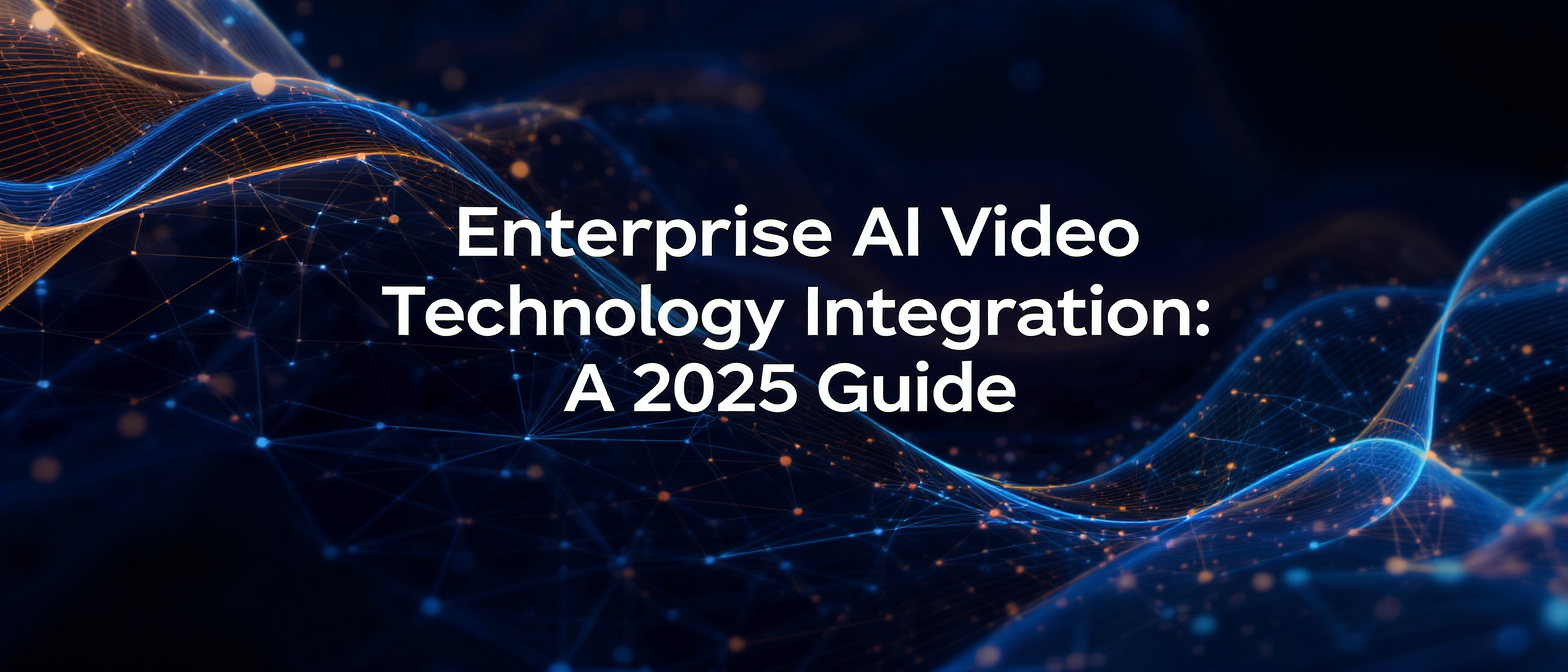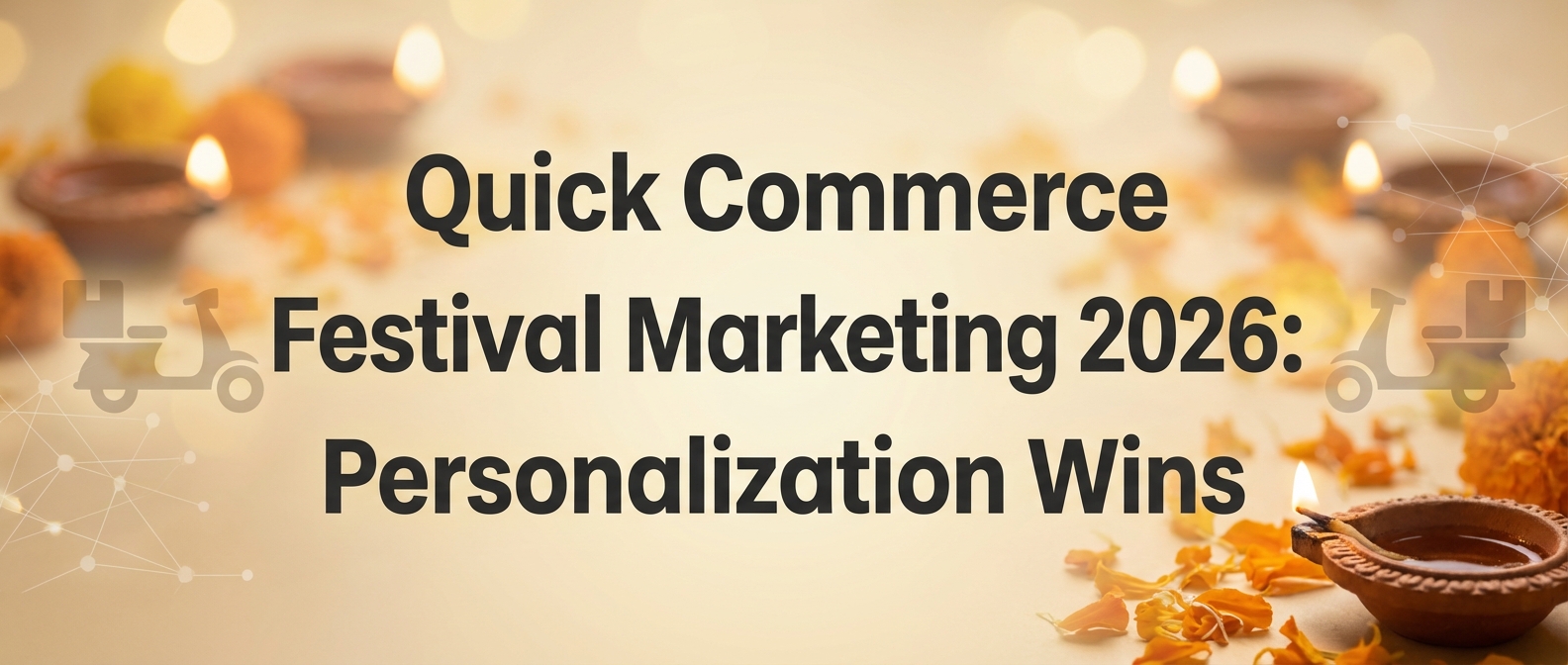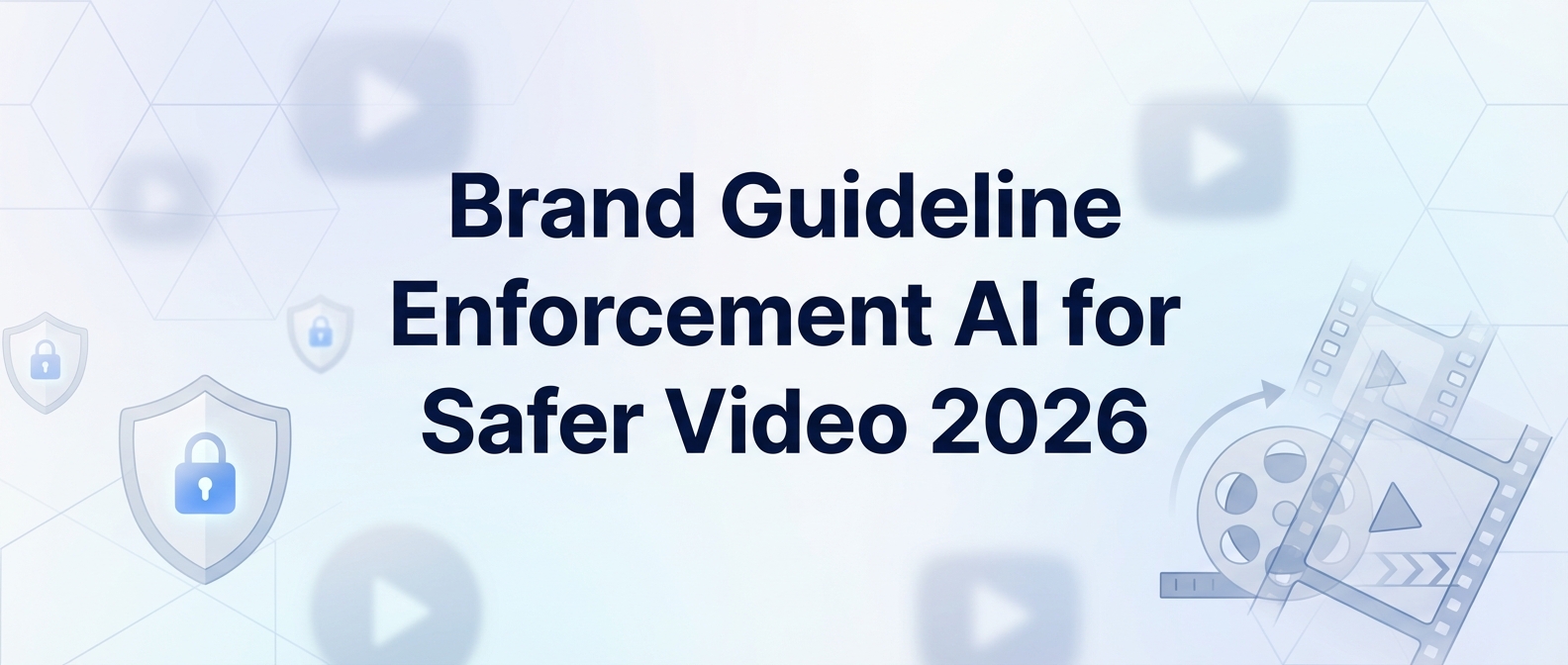Enterprise AI Video Technology Integration: A CTO’s Roadmap to Hyper-Personalized Marketing
Estimated reading time: ~16 minutes
Key Takeaways
- Enterprise AI video technology integration enables hyper-personalized marketing at massive scale.
- Scalable infrastructure and secure APIs are essential for seamless, real-time personalization.
- ROI measurement and optimization require ongoing monitoring and iterative improvement.
- Case studies show dramatic engagement lifts and conversion boosts when personalization is done effectively.
- A structured implementation roadmap guides CTOs from initial audit through continuous optimization.
In today's digital-first economy, the mandate for Chief Technology Officers and IT leaders has expanded beyond infrastructure management into strategic business enablement. A critical frontier in this evolution is enterprise AI video technology integration. This practice involves embedding sophisticated AI-driven video personalization and analytics engines directly into existing MarTech and CRM platforms. The goal is to automate, scale, and secure personalized customer outreach in a way that was previously unimaginable.
For CTOs, this isn't just another marketing technology integration; it's a strategic driver for digital transformation. As enterprises move towards hyper-personalization, the ability to connect with millions of customers on a one-to-one basis becomes a powerful competitive differentiator. Effective enterprise technology adoption in this domain delivers measurable ROI, enhances customer loyalty, and future-proofs the organization’s marketing capabilities.
This roadmap provides a comprehensive guide for CTOs and IT leaders, covering the technical architecture, implementation strategies, and real-world applications of AI-powered video personalization.
1. Overview of Enterprise AI Video Technology Integration
At its core, enterprise AI video technology integration is about creating seamless connectivity between AI video APIs, dedicated video management platforms, and an organization's core systems. This includes CRMs like Salesforce, marketing automation tools like Marketo, and foundational data warehouses. The integration transforms static customer data into dynamic, engaging video experiences delivered at scale.
For IT leadership, the importance of this integration cannot be overstated. It provides the technical backbone to deliver scalable and secure video personalization across every conceivable customer touchpoint. From a governance perspective, it centralizes control over brand messaging and ensures strict compliance with data privacy regulations. A well-executed integration strategy optimizes the entire MarTech stack, turning disparate systems into a cohesive engine for growth.
Modern platforms are engineered to meet stringent enterprise performance and security benchmarks. Key metrics include sub-30-second video render times, ensuring real-time delivery for time-sensitive campaigns. TrueFan AI’s 175+ language support and Personalised Celebrity Videos showcase the potential for global reach with localized relevance, while certifications like ISO 27001 and SOC 2 provide the assurance of robust security and compliance frameworks.
Source: https://analyticsindiamag.com/enterprise-ai-video-adoption-2025/
Source: https://enterprisetube.com/blog/how-ai-will-transform-video-management-by-2025
Source: https://aws.amazon.com/what-is/enterprise-ai/
2. Benefits of AI Video Technology in Marketing
Integrating AI video technology isn't merely a technical upgrade; it's a strategic move that yields substantial returns across key marketing metrics. The ability to automate personalization creates a flywheel of engagement, conversion, and loyalty that directly impacts the bottom line.
Personalization at Scale
The primary benefit is the ability to achieve personalization at a massive scale. AI algorithms analyze vast datasets—including user attributes like name, location, and purchase history—to generate millions of unique one-to-one videos. This moves beyond simple name-merging to create content that is genuinely relevant to each individual, boosting message resonance significantly. Platforms like TrueFan AI enable brands to leverage celebrity endorsements in a hyper-personalized format, making each customer feel uniquely valued.
Engagement Uplift
Personalized video content is inherently more engaging than generic messaging. According to internal case data, personalized videos can increase click-through rates (CTRs) by over 50% and boost view-through rates by more than 30%. When a customer receives a video that speaks directly to them, they are far more likely to watch, click, and share, amplifying the campaign's reach and impact.
Tangible Conversion Improvements
Higher engagement translates directly to improved conversion rates. A campaign for the travel portal Goibibo demonstrated that personalized videos delivered via WhatsApp resulted in a 17% higher conversion rate compared to standard text-based offers. This tangible lift provides clear evidence of the technology's effectiveness in driving customer action and revenue.
Demonstrable ROI
The return on investment is compelling. In a contest for the media group Dainik Bhaskar, the use of personalized celebrity videos generated a 3.2× lift in participation. This kind of ROI evidence is crucial for justifying investment in new technologies. By optimizing the tech stack and leveraging automation, enterprises can achieve significant results without a proportional increase in marketing spend.
Source: https://analyticsindiamag.com/ai-personalization-video-marketing/
Source: https://www.forasoft.com/blog/article/ai-video-streaming-benefits-enterprises
Source: https://successive.tech/blog/enterprise-ai-applications-benefits-challenges/
3. Key Elements & Technologies in an AI Video Integration
A successful enterprise AI video technology integration relies on a robust technical architecture composed of several key elements. CTOs must ensure these components work in harmony to deliver a seamless, scalable, and secure solution.
AI Video API Implementation
The linchpin of the integration is the Application Programming Interface (API). Modern platforms utilize RESTful APIs that allow enterprise systems to programmatically send data and trigger video rendering. This involves making API calls with JSON payloads containing dynamic data points, such as text_data (e.g., customer name, location) and image_data (e.g., product image, user profile picture), which are then mapped to specific video templates for rendering.
Enterprise CRM Integration
Connecting the AI video generation service with the enterprise CRM (like Salesforce or Microsoft Dynamics) is critical. This can be achieved through pre-built connectors, which simplify the integration process, or via custom middleware for more complex workflows. A direct Salesforce video integration, for instance, allows marketing teams to trigger personalized video sends directly from CRM workflows, such as when a customer's status changes or a new lead is created. For a detailed case study on integrating personalized video campaigns with CRM systems, refer to Zomato's Mother's Day Campaign with TrueFan AI.
Infrastructure and Data Flow Requirements
The infrastructure must be designed for high performance and scalability. This typically includes:
- Cloud-Agnostic GPU Farms: Essential for handling the computationally intensive task of video rendering at scale.
- High-Bandwidth Networks: Needed to manage the large data transfers required for video processing and delivery.
- Low-Latency Pipelines: Crucial for enabling real-time personalization, where videos are generated and delivered within seconds of a trigger event.
A Typical Data Flow Diagram
The process can be visualized as a four-step flow:
- Data Trigger: Customer data from the CRM or another system triggers an event.
- API Call: The enterprise system makes a secure API call to the AI video platform, passing the personalization data.
- Video Rendering: The AI engine uses a pre-approved template to render a unique video with the provided data.
- CDN Delivery: The final video is delivered to the end-user via a Content Delivery Network (CDN) for fast, reliable playback.
Source: https://analyticsindiamag.com/ai-video-apis-crm-integration-in-india/
Source: https://enterprisetube.com/blog/how-ai-will-transform-video-management-by-2025
4. An IT Implementation Roadmap for CTOs & IT Leaders
Adopting enterprise AI video technology requires a structured, phased approach. This four-phase roadmap is designed to guide CTOs and IT leaders through a successful implementation, from initial assessment to ongoing optimization, ensuring alignment with business goals and a strong tech stack ROI.
Phase 1 – Assessment and Discovery
The first step is a thorough audit of the existing MarTech stack.
- System Audit: Identify all relevant platforms, including CRM, marketing automation, data warehouses, and customer data platforms (CDPs).
- Integration Point Identification: Pinpoint where the AI video platform will connect with these systems.
- Data Source Mapping: Catalog all available data sources that can be used for personalization.
- Compliance Gap Analysis: Assess current data governance policies against the requirements of GDPR, CCPA, and other relevant regulations.
Phase 2 – Strategic Planning and Design
With a clear understanding of the current state, the focus shifts to planning.
- Define KPIs: Establish clear metrics for success, such as engagement uplift, conversion rate improvement, and overall ROI. According to a 2025 report from HubSpot, tracking such metrics is critical as AI shapes marketer efficiency.
- Select Templates: Choose celebrity-led or branded video templates that align with campaign goals.
- API Endpoint Mapping: Design the data flow and map the specific API endpoints that will be used.
- Data Governance Model: Create a robust governance model that defines data handling, consent management, and access controls.
Phase 3 – Execution and Integration
This is the core technical implementation phase.
- API Configuration: Configure the AI video API endpoints within the organization’s CI/CD pipeline for automated deployment and management.
- Secure Authentication: Establish secure authentication with the CRM using protocols like OAuth or API keys to protect data in transit.
- Access Control Implementation: Implement Single Sign-On (SSO) and Role-Based Access Control (RBAC) to ensure that only authorized enterprise team members can access the platform.
Phase 4 – Monitoring, Iteration, and Optimization
The integration is not a one-time project but an ongoing process of improvement.
- Performance Monitoring: Use analytics dashboards to track key metrics like view rates, conversion lift, and infrastructure resource utilization.
- Iterative Improvement: Analyze performance data to gain insights into what works best. For example, A/B test different scripts or personalization elements to optimize results.
- ROI Measurement: Solutions like TrueFan AI demonstrate ROI through detailed analytics that connect video engagement directly to business outcomes like sales or customer retention.
Data privacy and compliance must be woven throughout all phases. A consent-first model is non-negotiable, ensuring full adherence to regulations like GDPR and CCPA. Automated content moderation filters should also be implemented to prevent the generation of inappropriate or off-brand content.
Source: https://www.hubspot.com/marketing-statistics
Source: https://aws.amazon.com/what-is/enterprise-ai/
5. Case Studies & Real-World Applications
The true power of enterprise AI video technology integration is best understood through real-world applications. These case studies illustrate how leading brands are leveraging this technology to create groundbreaking marketing campaigns. For example, see Hero MotoCorp's Use of AI for Personalized Marketing to understand large-scale personalized video deployments.
Zomato’s “Maa ke liye” Mother’s Day Campaign
Food delivery giant Zomato created a viral campaign by allowing users to send a personalized Mother's Day video message from Bollywood star Vidya Balan. The platform generated an astounding 354,000 unique videos in a single day, with each video addressing the user’s mother by name. This campaign achieved massive social engagement and drove a record number of orders, demonstrating the technology's ability to handle extreme scale and create powerful emotional connections.
Goibibo’s Personalized Travel Nudges
Goibibo, a leading online travel platform, used personalized videos featuring cricketer Rishabh Pant to re-engage users who had searched for a trip but not booked. The videos, delivered via WhatsApp, referenced the user’s specific searched destination and included a dynamic discount code injected via the API. The campaign led to a 17% lift in booking conversion, proving that timely, context-aware personalization can significantly influence consumer behavior.
Hero MotoCorp’s Hyper-Localized Festive Greetings
To engage its vast customer base during Diwali, Hero MotoCorp sent out 2.4 million personalized video wishes from celebrities. Each video addressed the customer by name and included details about their local dealership, driving a significant uptick in visits to service camps. This case highlights how AI video can bridge the gap between digital engagement and offline action.
Cipla’s B2B Doctor’s Day Campaign
Pharmaceutical leader Cipla used the platform to send bespoke thank-you videos to 6,400 doctors on Doctor’s Day. The videos featured a celebrity addressing each doctor by name, reinforcing brand loyalty in the highly competitive B2B healthcare space. The campaign earned widespread appreciation and organic PR within the medical community, showcasing the technology's effectiveness for high-touch B2B relationship management.
6. Challenges & Solutions in Enterprise Video Technology Integration
While the benefits are significant, integrating AI video technology at an enterprise level comes with its own set of challenges. A proactive approach, grounded in best practices, can mitigate these risks effectively.
Challenge: Data Security
Handling sensitive customer data requires uncompromising security.
- Solution: Implement end-to-end encryption for data both at rest and in transit. Utilize tokenized data pipelines to avoid exposing raw PII to the video rendering engine. Automated content moderation filters are also essential to block unapproved or malicious content from being generated, protecting both the brand and its customers.
Challenge: Scalability and Performance
Campaigns targeting millions of users can create massive, sudden spikes in demand.
- Solution: Adopt a cloud-native architecture that leverages autoscaling GPU clusters. This ensures that the infrastructure can dynamically scale to handle any load, from a few thousand videos to millions, without performance degradation. This is particularly crucial for campaigns like Zomato's, which required generating hundreds of thousands of videos in a 24-hour period.
Challenge: System Resilience
Dependencies on external APIs can introduce potential points of failure.
- Solution: Implement robust resilience patterns in the integration architecture. Use circuit-breaker patterns to prevent cascading failures and employ automated retry logic for API calls. Integrate comprehensive health checks and SLA-driven monitoring to detect and respond to issues before they impact the user experience.
Challenge: Integration Complexity
Connecting new platforms to a complex legacy MarTech stack can be daunting.
- Solution: Mitigate complexity by using a modular, microservices-based approach. Leverage pre-built, reusable connectors wherever possible to speed up integration with common platforms like Salesforce. Insist on thorough and well-documented APIs from the video platform vendor to streamline the development process.
Source: https://www.forasoft.com/blog/article/ai-video-streaming-benefits-enterprises
Source: https://enterprisetube.com/blog/how-ai-will-transform-video-management-by-2025
7. Future Trends & The Road Ahead
The field of enterprise AI video technology is evolving rapidly, driven by advancements in generative AI and increasing consumer expectations. Staying ahead of these trends is crucial for maintaining a competitive edge. A 2025 report from Wistia notes that a majority of companies are now turning to AI to streamline and scale their video creation processes.
Generative AI for Content Creation
The next wave of innovation will see generative AI playing a larger role in the creative process itself. Expect AI models that can automatically generate entire video scripts, create unique jingles, and even produce interactive, branching video experiences where the narrative changes based on user input.
True Omnichannel Personalization
The future is not just about sending a video via one channel. We will see real-time video personalization deployed across an omnichannel landscape, including digital billboards that greet loyalty members by name, personalized in-app video messages, and dynamically generated video content within emails.
Predictive Personalization
AI will move from being reactive to proactive. Predictive models will analyze user data to forecast the optimal timing, messaging, celebrity choice, and channel for delivering a personalized video to each specific segment, maximizing its impact. By 2025, market analysts predict that over 75% of marketing touchpoints will be influenced by AI-driven predictive analytics.
Granular Privacy and Consent Controls
As data privacy becomes even more critical, expect to see more sophisticated, user-centric controls. This will include consent dashboards where users can manage their data preferences, transparent consent logs, and dynamic systems that honor user choices in real-time across all platforms.
Source: https://wistia.com/learn/marketing/video-marketing-statistics
Source: https://www.idomoo.com/blog/2025-video-marketing-statistics-and-consumer-trends/
Conclusion & Actionable Insights
For CTOs and IT leaders, enterprise AI video technology integration is no longer a futuristic concept but a present-day imperative. It represents a fundamental shift in how brands connect with their customers, moving from mass communication to mass personalization. The technology delivers a clear competitive advantage by driving engagement, boosting conversions, and providing a measurable return on investment.
Key Takeaways for IT Leadership:
- Prioritize a modular, cloud-based architecture to ensure scalability and resilience.
- Insist on secure, well-documented APIs to streamline integration and maintain data integrity.
- Implement iterative monitoring and optimization to continuously improve performance and maximize tech stack ROI.
The journey to hyper-personalization is a strategic one, requiring a blend of technical expertise and marketing vision. The time to build the foundation for this transformation is now.
Your Next Steps:
- Engage with TrueFan AI’s Enterprise solutions to leverage pre-built integrations, compliance-ready templates, and expert support.
- Schedule a technical workshop with your team to explore potential use cases and integration points within your existing infrastructure.
- Request a proof-of-concept (POC) to validate the technology and measure its potential impact on your key business metrics.
By taking these actionable steps, you can begin the process of unlocking the full potential of personalized video and positioning your organization as a leader in the next generation of customer engagement.
Frequently Asked Questions
1. What is the typical implementation timeline for an enterprise AI video integration?
The timeline can vary based on the complexity of the integration. A straightforward implementation using pre-built connectors might take 4-6 weeks. A more complex project involving custom middleware and multiple data sources could take 3-4 months, from initial assessment to full rollout.
2. How does enterprise AI video integration handle data security and privacy?
Security is paramount. Leading platforms are built on a foundation of security best practices, including end-to-end data encryption, ISO 27001/SOC 2 compliance, and strict adherence to regulations like GDPR and CCPA. Data is typically processed using tokenization to avoid handling raw PII, and all user consent is managed transparently.
3. Can the AI-generated videos match our brand's specific tone and style?
Absolutely. The process starts with creating custom video templates that are fully aligned with your brand guidelines, including logos, color palettes, fonts, and overall aesthetic. The AI engine then works within these pre-approved templates, ensuring all generated content is perfectly on-brand.
4. How can we measure the ROI of our personalized video campaigns?
ROI is measured through detailed analytics dashboards that track key performance indicators. This includes direct metrics like click-through rates and conversion lift, as well as broader business impacts like increased customer lifetime value and reduced churn. A/B testing is often used to compare the performance of personalized videos against control groups.
5. How can our organization get started with enterprise AI video technology?
The best first step is to partner with an experienced provider. Platforms like TrueFan AI offer comprehensive enterprise solutions that include not just the technology but also strategic guidance and technical support. Engaging their team for a discovery workshop can help you build a business case and a technical roadmap tailored to your specific goals.
6. What kind of infrastructure is required on our end?
The beauty of modern cloud-based AI video platforms is that they require minimal infrastructure on the client-side. As long as your systems (e.g., CRM, marketing automation platform) can make secure REST API calls, you can integrate the service. The heavy lifting of video rendering is handled by the platform's GPU-powered cloud infrastructure.




